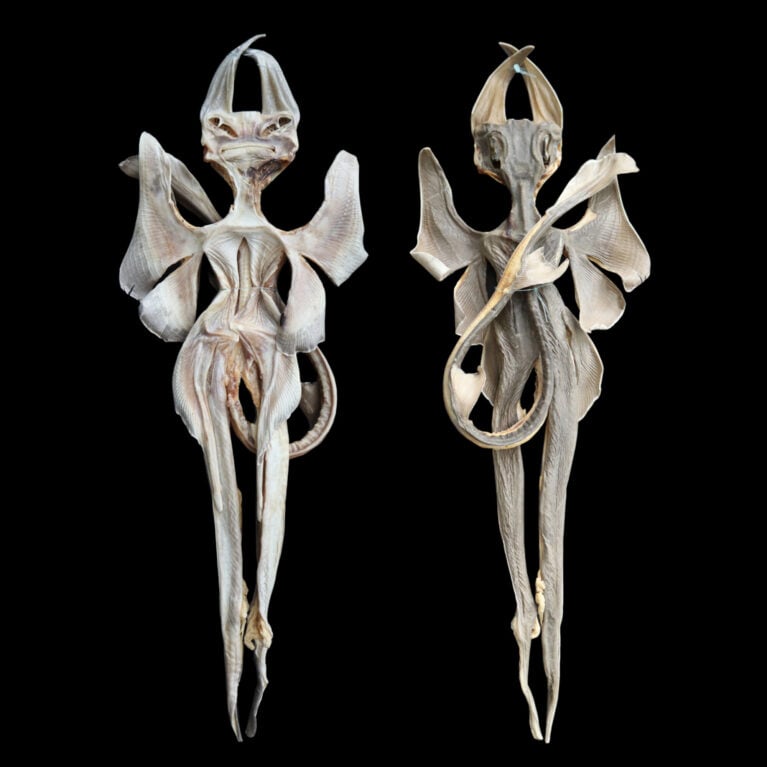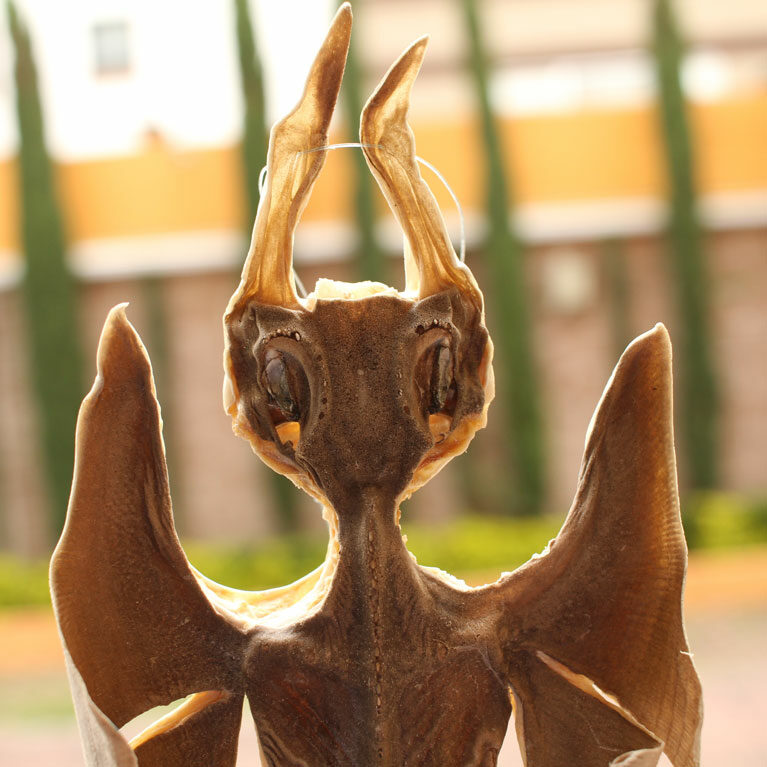Guitarfish on Mexico’s medicinal market
Bryan is on a mission to know which guitarfish are marked as ‘pez diablo’. These are guitarfish species that are caught, cut and modified to have a ‘devil-like’ appearance to be sold in Mexico’s curio and medicinal markets. Of the nine species of this highly endangered group of shark-like rays occurring globally, 8 are found in Mexico. Using a combination of methods, Bryan will investigate which species are being sold in this way and create infographics to educate about Mexico’s 8 guitarfishes.
I was born and raised in Mexico City, yet during my childhood I always felt influenced by the natural world. Growing up in a mega-diverse country like Mexico made me interested in wildlife from a very young age. I can vividly remember talking with my father and uncle about the world’s unique creatures while we were sharing outdoor adventures in the countryside. However, my passion for animals did not end with my childhood; I decided to turn that early hobby into my professional career by pursuing an undergraduate degree in conservation and wildlife management in the USA. As a student...



The devil is in the details – molecular identification of guitarfishes sold as “pez diablo"
To document which guitarfish species are being marketed as ‘pez diablo’ in Mexico by using morphometric and genetic methods.
Of the nine recognised guitarfish species of the genus Pseudobatos in the world, eight have been recorded in Mexico. When caught, they are carved and modified in such a way as to look like devils and are then sold as ‘pez diablo’ for various purposes, including traditional medicines, or as curio items. To date, no studies have documented which guitarfish species are being marketed as ‘pez diablo’ in Mexico, even though seven of the eight species are considered threatened by the IUCN.
Shark-like rays of the order Rhinopristiformes are among the world’s most threatened elasmobranchs, given their vulnerability to overfishing, habitat destruction and pollution. Guitarfish make up one genus, Pseudobatos, within this order, which comprises nine species that are found exclusively in the New World. In Mexico, guitarfish are targeted for human consumption by commercial and artisanal fisheries and are sold fresh or dried. Pregnant females have frequently been observed aggregating seasonally in coastal Mexico, which makes them especially susceptible to being caught in large numbers and thus to declining populations. In particular, the shovelnose guitarfish P. productus was the primary elasmobranch landed in Sonora, northern Mexico, in 1998–1999.
Mexico has a long-standing tradition of using wildlife for a variety of medicinal purposes. Guitarfish sold in the country are routinely carved, shaped and dried to create a devil-like appearance and labelled as ‘pez diablo’, then sold alongside medicinal herbs and ‘witchcraft items’ or as curios. The tradition of modifying rays in this way was first reported in Europe as long ago as the 1550s, when they were referred to as ‘Jenny Hanivers’. Although ‘pez diablo’ is well-known and widespread in Mexico, few people are aware that it is made from threatened guitarfish species. Moreover, the common name ‘pez diablo’ is also used to describe a highly invasive sailfin catfish species that has severely damaged Mexican ecosystems. Understandably, the use of the term pez diablo for an invasive species and for threatened guitarfish causes confusion for the non-biologist.
- To collect samples of modified guitarfish sold as ‘pez diablo’ in Mexico from different vendors in Mexico City. Preliminary identification will be made in the field.
- To identify genetically guitarfish species sold as ‘pez diablo’. Genetic identification will confirm whether samples of ‘pez diablo’ can be accurately and reliably identified to species level by using identification guides, even though they have been modified and dried.
- To create for the non-biologist a supplementary infographic of the eight guitarfish species found in Mexico. An additional section will discuss the main differences between modified guitarfish ‘pez diablo’ and the invasive freshwater sailfin catfish also known as ‘pez diablo’.

